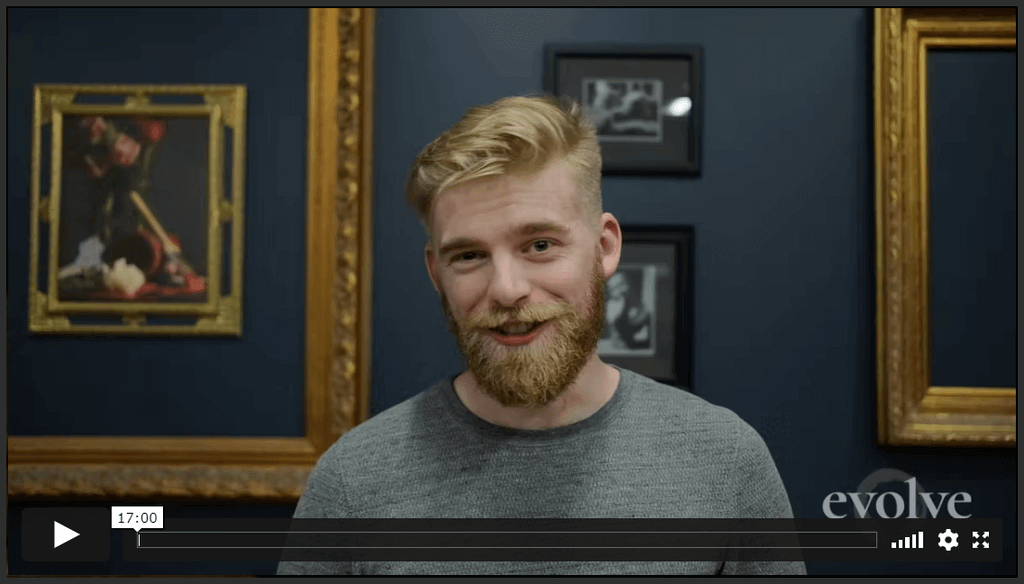4 Beginner Painting mistakes and how you can avoid them
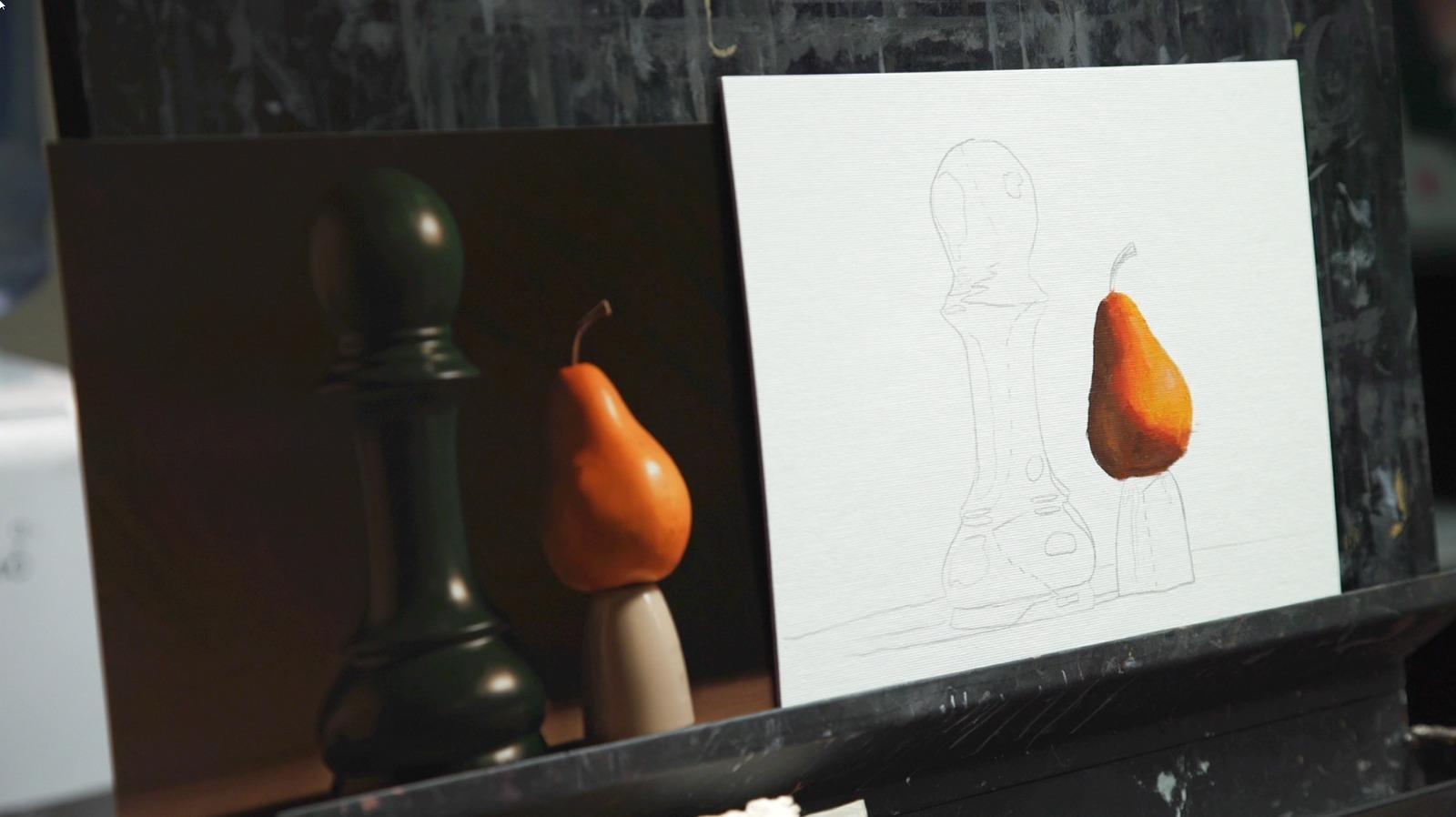
There are several mistakes that beginning painters may struggle with, read on to find out how to avoid the most common!
More...
At the start of their education, there are several commonly made beginner painting mistakes. These missteps, though common, often get overlooked by new painters as they do not have the experience to catch where they have gone wrong.
Through experience, many of these mistakes will eventually disappear over time and by the process of making paintings. However, understanding and looking for these common mistakes in your work can help you to grow and improve as an artist.
So here are a few common painting mistakes to keep an eye on and how they can be avoided by beginners.
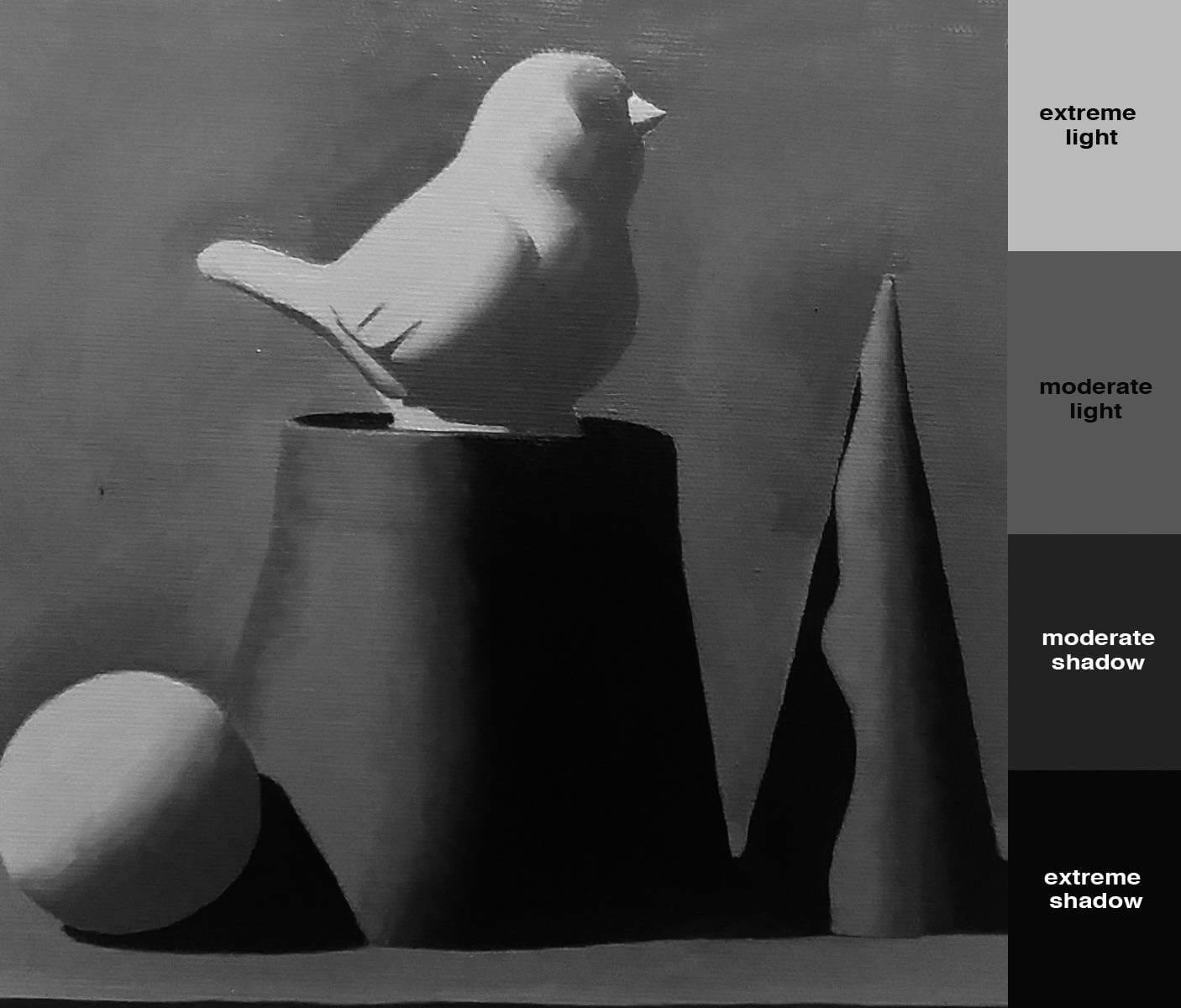
Brian W. shows a great example of perfectly controlled values. Can you see how all of the shadows are darker than even the darkest lights? This organization helps beginners to avoid common mistakes and understand how to handle value.
1. Incorrect Values
Here at Evolve, we believe that value is one of the three moving parts of any painting. Value simply speaks about the lightness or darkness of tones and colors. Issues in value is a common beginner painting mistake.
One of the biggest value issues that surface in beginners work is the confusion of light and shadow. Evolve students learn how to paint within a strict set of rules. They receive only two light values and two shadow values to work with. These restrictions help them to learn that light and shadow values must be different at first.
Of course, as they learn, they will realize that some shadows appear lighter than very dark lights. But they will then have the skills to appropriately handle the value changes that they see in their painting reference.
Value is a crucial part of any painting. Beginners must carefully examine their references and ensure that they understand what is light and shadow. By understanding this, they can place lights and shadows in the correct places with confidence.

Evolve Students Tonya C., Ramona O., and Holly H. have taken simple objects and arranged them in a way that is complex by using both light and composition.
2. Choosing the Wrong Thing to Paint
One of the most common mistakes that beginners make is choosing an inappropriate subject for their level.
When you begin to learn how to oil paint, there are a lot of new concepts and rules to juggle. Challenging yourself with a complex still life or subject matter may improve your skills down the road. However, as a beginner, keep it simple.
Often, we tell our students that when setting up a still life, simple objects can be made complex by arranging them in a complex manner. This prevents students from choosing too difficult a subject to successfully complete or that causes them to develop bad habits.
When we choose a subject out of our reach at the moment, we open the door for bad habits to form.
When we choose a subject out of our reach at the moment, we open the door for bad habits to form. If a student begins to produce imperfect, disproportional work, it is often because the subject has proven too complex. So the student begins to disregard things in order to finish the piece.
However, when a student decides that an object just didn’t work out perfectly because it was difficult, this usually means the subject was too complex for them at this point.
So when you choose a subject to paint, ensure that you can look at it and understand the value, edges, and color within the painting. Then compare it to work you have previously done.
If it seems like a small step up, but manageable, give it a try. However, if it seems much more complex than what you have been doing and you do not understand each moving part, set aside for a later time.
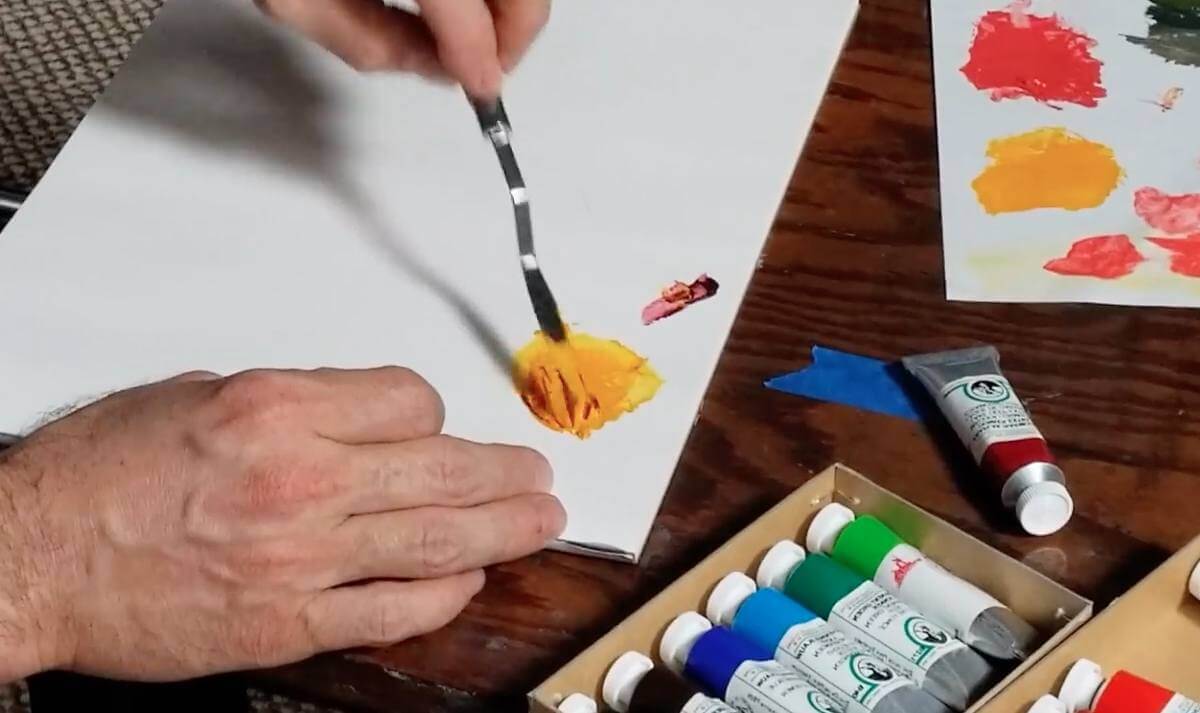
For beginners, color mixing is an important part of learning how to paint.
3. Color Mixtures and Overusing White
Color mixing holds an important place in learning how to paint. However, one of the common beginner painting mistakes is not experimenting with mixtures, and instead using paint directly from the tube.
Now a few, beautiful colors can be used straight out of the tube, but this is very rare! A huge part of painting happens in color mixing before you even touch the canvas. This means that students must practice and experiment with color mixtures.
Much of this lies in only accepting the highest quality for your work. So if it is in your ability to make a color perfect, do so. If you cannot figure out a color and have experimented as much as you know how then get as close as possible and trust that with each painting the color mixing will improve if you are holding yourself to high standards.
Along with failing to properly mix color, many students overuse white in their paintings to lighten their mixtures. White is a necessary color to lighten and create certain paint mixtures, but when overused, can destroy a painting.
White paint has a tendency to pull the color out of paint mixtures. So if you add too much white to a mixture, you may end up with an unsaturated, less colorful version of your color.
In order to avoid overusing white, simply experiment with adding other light colors instead of relying solely on white. By carefully thinking through your mixtures and practicing, you can avoid many common mistakes in color mixing.
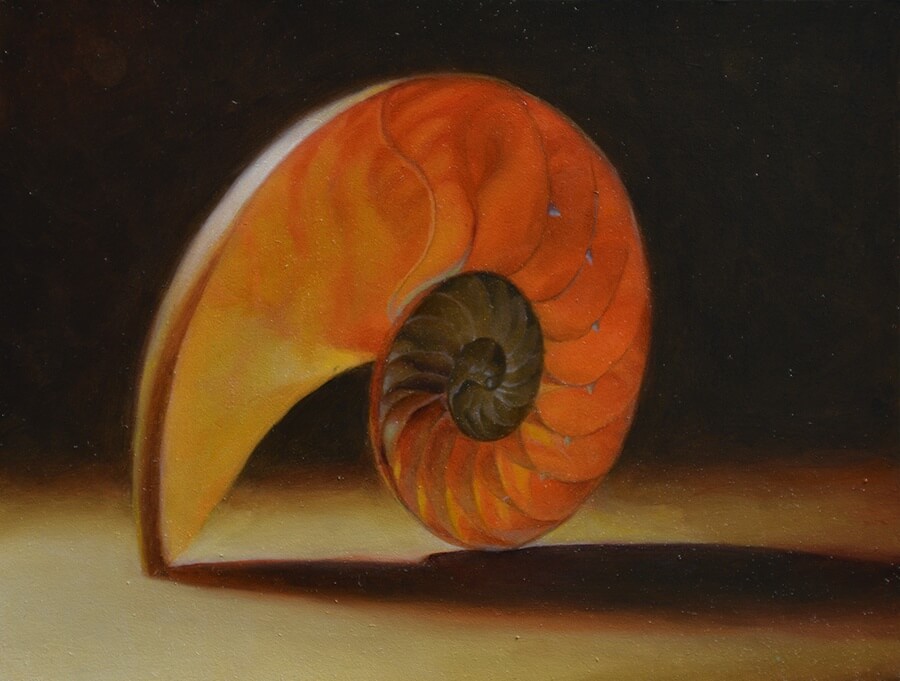
The colorful shadows in this painting of a Nautilus bring dimension and an understanding of the shell's thickness to the viewer.
4. Using Only Black for Shadows
Using pure black in the place of a shadow is the final common painting mistake beginners make. Shadows provide crucial information for paintings, explaining the direction, intensity, and temperature of the light.
Many students rely heavily on black for making shadows. They will start with black and either add color or white until it looks a little darker than the light. This creates flat, unrealistic shadows, whereas true shadows have an enormous amount of color and life in them.
Here at Evolve, we teach our students to create a light mixture and then add black to it to express a shadow in the beginning. This helps keep things simple at first. As they master color light mixing, we transition them into mixing color shadows, mixing exactly the color they see in the shadow and applying it to their painting.
Reflections also play a large part in realistic shadows. However, many beginners make the mistake of leaving them out or overstating them. Leaving out a reflection means leaving out vital information about the light and object. Making a reflection in the shadows as bright as a light value means that it will no longer read as a shadow but as a light. Both mistakes can cause a painting to fall short of its potential.
Taking care to examine the color and value of a shadow means that you will carefully avoid the beginner’s mistake of painting shadows black.
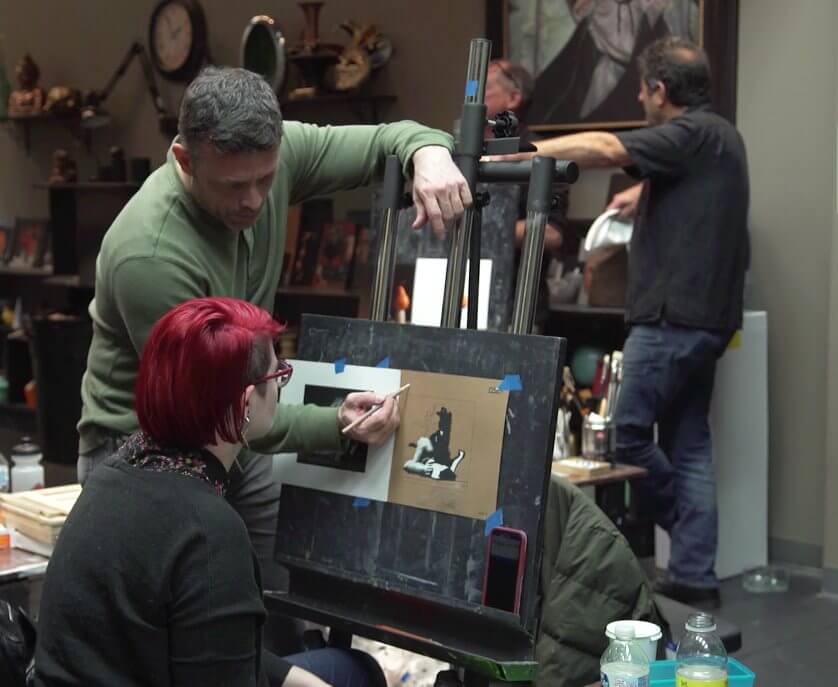
Guidance from a technically trainer teacher will help you to avoid most mistakes, but growing from your mistakes is also a large part of becoming an artist.
Conclusion
Part of learning lies in making mistakes. But if you do not learn or grow from beginner painting mistakes, they are then truly mistakes. By looking for these common issues in your paintings as you learn, you will continue to improve and spot them for yourself.
If you keep high standards for your work and continue to learn from your mistakes, you will grow exponentially as an artist.


